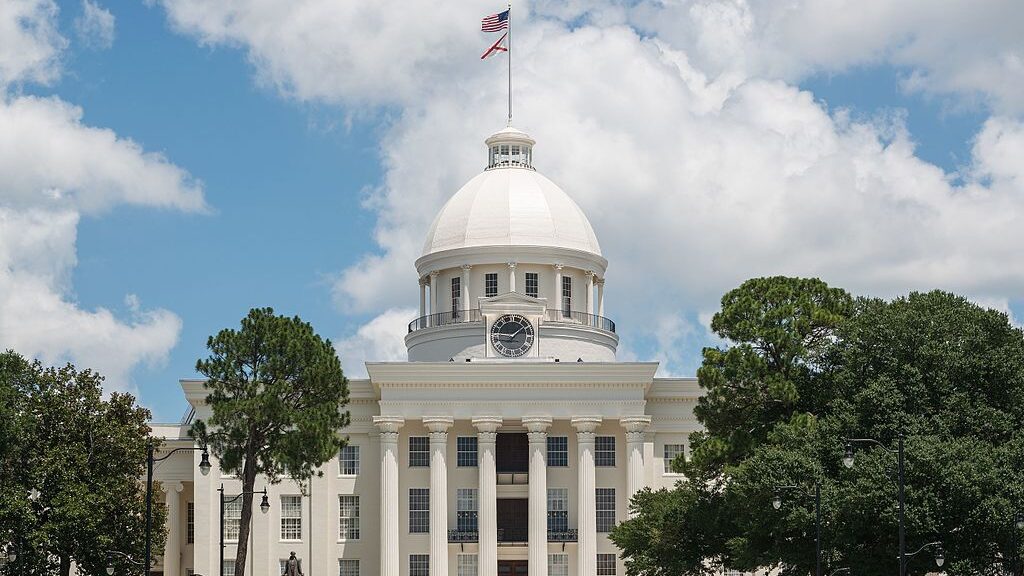Since opening in May of 2021, Alabama’s crisis centers have helped thousands of Alabamians suffering from mental health or substance use, with demand for the centers continuing to skyrocket.
While Alabama Department of Mental Health Commissioner Kim Boswell has long advocated for additional crisis centers to cover the entire state, state lawmakers recently suggested a dedicated revenue stream should first be established before funding additional centers, citing future economic uncertainty.
Rep. Rex Reynolds, R-Hazel Green, was among those lawmakers and expressed his hesitation to allocate new funds toward the construction of new crisis centers during a budget hearing at the State House. Reynolds chairs the House General Fund Committee.
“I sat with some of the mental health professionals last week at a conference, and I will tell you, overwhelmingly they feel like the crisis centers have absolutely increased access to mental health in Alabama, but they also feel like they’re full as soon as we open one,” Reynolds said.
“Before we continue to grow additional crisis centers, I do think we’ve got to figure out a steady funding mechanism.”
New data
Reynolds’ comments came during a presentation given during the budget hearing with Boswell, who shared new data on the growing demand for crisis care, as well as what could be done to meet that demand.
“We hit a pretty big milestone, we have now served over 12,000 individuals in our crisis centers across the state,” Boswell said.
“That’s huge for us; that means over 2,000 people who avoided jail and went to a crisis center instead, and then 8,881 who avoided the emergency department. So those numbers are pretty huge, (but) there is still a lot more work to do, we don’t have crisis centers covering all of our counties.”
There are currently five operational crisis centers in the state, and a sixth in Dothan is expected to open sometime this summer or early fall. Once the sixth is operational, the crisis centers will cover 20 of the state’s 67 counties.
To cover the entire state, Boswell said it would require at least 11 crisis centers. The annual cost to operate a crisis center is around $7 million, Boswell said, meaning it would cost the state an additional $35 million a year for crisis centers to cover all 67 counties, excluding construction costs.
The majority of admissions — 5,185 — experienced symptoms of depression, followed by substance use disorder at 4,134. Just over 3,900 experienced symptoms of anxiety, 2,081 were suicidal, and 1,289 experienced symptoms of mania.
In the fiscal 2025 budget, ADMH has a $24 million increase over the current year to nearly $238 million.
While ADMH doesn’t have the funds to construct five additional crisis centers, since fiscal year 2018 it has received a 95% increase in its allocation from the state’s General Fund.
Of that increase, which amounts to an additional $102.8 million in state funding, 50% of it between 2018 and 2024 was used toward the department’s Crisis Services, including the crisis centers, its 988 crisis hotline and its Mobile Crisis Teams, which currently cover 25 counties, some of which overlap with counties covered by crisis centers.
Funding for the ADMH took a $43 million hit in 2010 due to proration as a result of the 2008 financial crisis and had only reached pre-proration funding levels as recently as 2022.
Gaps in resources
Sen. Greg Albritton, R-Range, who chairs the Senate General Fund committee, acknowledged that while the state has increased funding for mental health initiatives dramatically in recent years, significant gaps in mental health care resources still exist.
However, a projected decrease in one of the state’s largest revenue sources — interest from federal dollars that are required to be spent by 2027 — led Albritton to taper expectations as to how soon additional crisis centers could be funded with state dollars.
“Since we’re speaking of money, the concerns that we’ve got are of course the future with where we may be,” Albritton said.
“We have been on a growth pattern which has allowed us to do this; the concern is when we’ll have a reversal for that. While we need and want to have and follow a plan, circumstances may interfere, so we’re trying to figure out a plan or a path that we can actually accomplish.”
Lawmakers were given a budget presentation July 16 from Kirk Fulford, deputy director at the Legislative Services Agency’s Fiscal Division, during which it was projected that the state’s revenue from interest on state deposits could fall from the $575 million this year to $150 million by 2028.
Other market factors
Other market factors, including economic downturns and falling interest rates, could lead to exacerbated budgetary challenges in the years ahead, leading both Albritton and Reynolds to suggest finding a new revenue source would be the best approach to funding additional crisis centers.
“I would reiterate what Mr. Fulford went into yesterday, that cautionary aspect of where we are financially, and where we may be,” Albritton continued.
Reynolds concurred and added that funding the construction of additional crisis centers could jeopardize existing mental health care infrastructure, should the state’s finances take a severe downturn.
“I do think before we begin expanding the number of crisis centers, we’ve just got to really sit down and have some tough conversations about how to fund those going forward, or we may jeopardize this infrastructure that we put in place,” Reynolds said.
EDITOR’S NOTE — This story was written by Alexander Willis and originally published by Alabama Daily News. It is reprinted with permission.





Share with others: